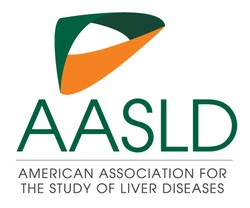

Background: Between October 2021—February 2022, 9 children in Alabama were identified with acute, severe hepatitis (inflammation of the liver) and Adenovirus viremia. Since then, additional pediatric patients under investigation have been reported to the Centers for Disease Control and Prevention (CDC) from several states (https://www.cdc.gov/ncird/investigation/hepatitis-unknown-cause/updates.html). Adenovirus is well known to cause pediatric acute gastroenteritis, but not severe hepatitis in healthy children.
Efforts are currently underway to better understand these cases as well as any contribution of Adenovirus, or other infectious factors or exposures, to the case reports. In addition to Adenovirus testing recommendations by the CDC (https://www.cdc.gov/ncird/investigation/hepatitis-unknown-cause/hcp.html), it was suggested that clinicians continue to follow ‘standard practice’ for evaluation and management of patients with hepatitis. To better inform the broader clinical community, we have put forth this guidance document to provide a reasonable approach to the diagnosis and management of acute hepatitis in children.
Who to test: Determination of hepatitis requires review of routine laboratory tests to assess for the presence of liver injury. Symptoms are generally non-specific thus consideration for testing should be made for any child presenting with:
- Fever
- Fatigue
- Loss of appetite
- Nausea
- Vomiting
- Abdominal pain
- Dark urine
- Light-colored stools
- Easy bleeding/bruising
Special consideration should be made for patients with the following history or physical exam findings:
- Jaundice/scleral icterus
- Known sick contacts
- Recent overseas travel
- Enlarged liver or spleen
- Ascites
- Peripheral edema
What to test: Simple blood tests are all that are needed to diagnosis hepatitis. In addition, studies that reflect overall liver function, such as coagulation (blood clotting) studies, are often informative. The following tests should be considered in children in whom hepatitis is suspected:
- Alanine aminotransferase (ALT)
- Aspartate aminotransferase (AST)
- Bilirubin (both total and fractionated)
- Prothrombin time (PT) and International normalized ratio (INR)
When to re-test: Minor elevations in screening tests may be common and repeat bloodwork within a 3–5-day window should be carefully considered in any patient whose clinical symptoms persist. Worsening symptoms or any suggestion of clinical deterioration should prompt earlier testing and likely clinical evaluation by a healthcare provider. Importantly, in children <10 years of age in whom the ALT or AST is found to be elevated >500 IU/L, the CDC is currently recommending specific testing for Adenovirus (https://www.cdc.gov/ncird/investigation/hepatitis-unknown-cause/hcp.html), and this can be performed at the time of testing follow-up.
Red Flags and When to Refer: While acute hepatitis often resolves with supportive care, the clinical course can be dynamic, and clinicians should be cognizant of a potential for rapid deterioration. Consultation with a pediatric gastroenterologist or transfer to a Children’s Hospital with a liver transplant program should be considered if:
- Any INR measurement ≥1.5
- Rising INR and bilirubin levels
- ALT > 500 IU/L
- Concerns for hepatic encephalopathy (sleepiness, fatigue, altered mental status)
- New onset jaundice or scleral icterus
- New onset easy bleeding or bruising
Resources:
CDC
NASPGHAN Position Paper on Pediatric Acute Liver Failure
NASPGHAN Link
AASLD Link






